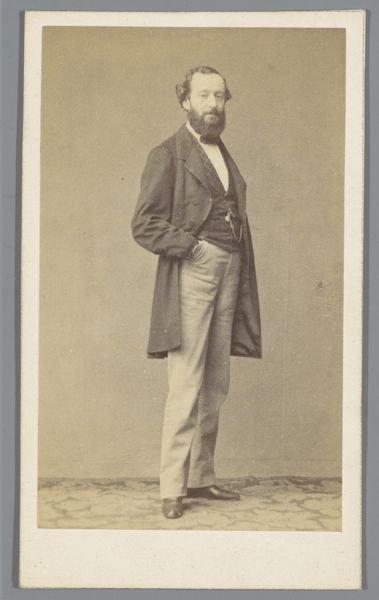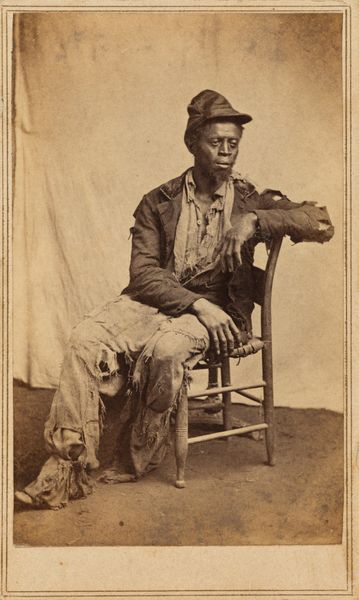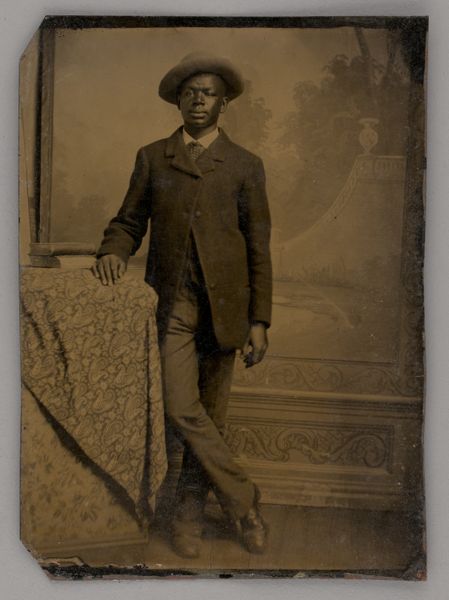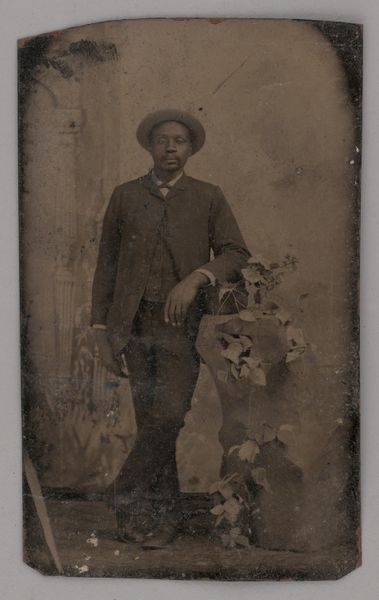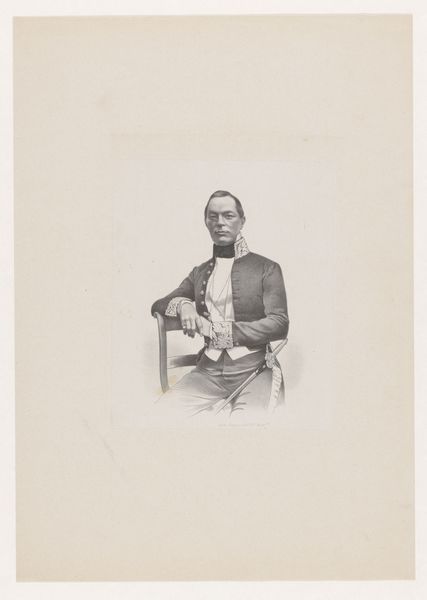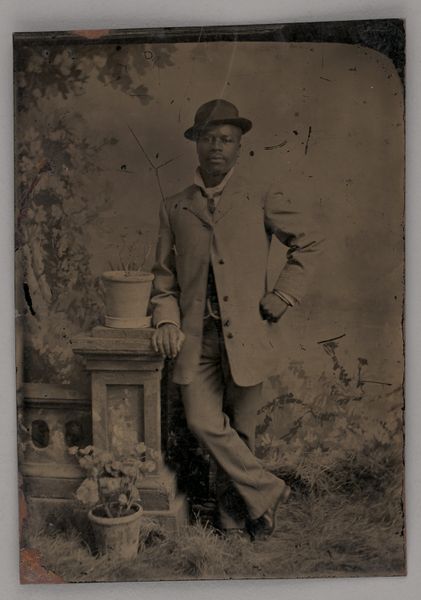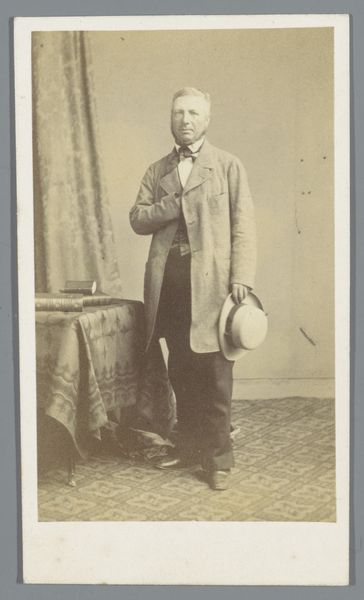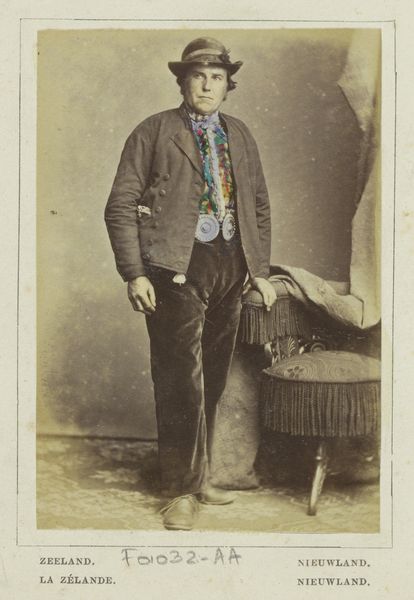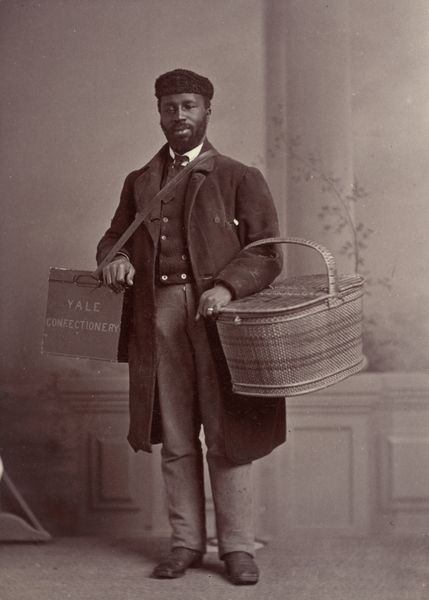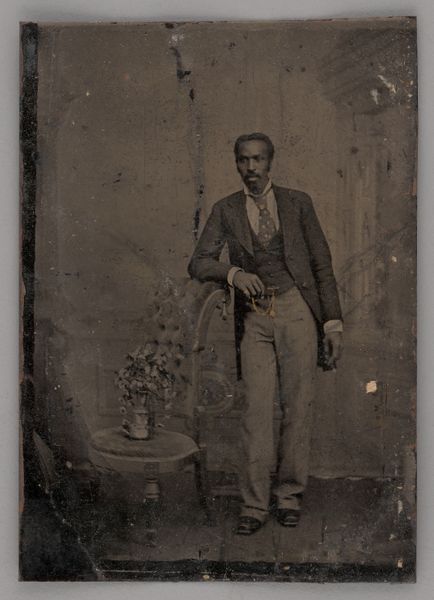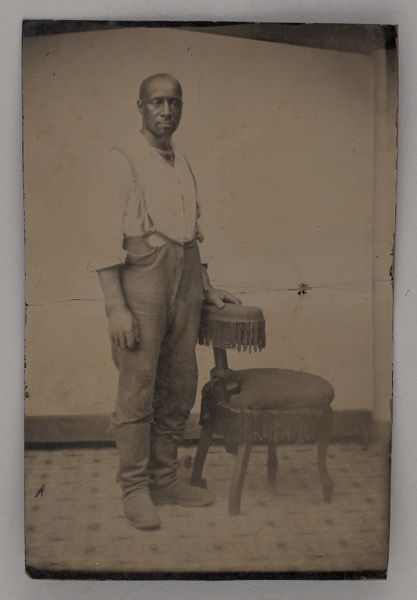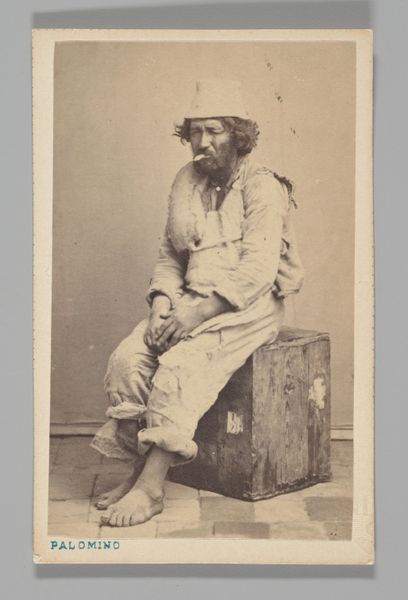![[Studio Portrait: Male Street Vendor Standing in Profile Holding Basket, Brazil] by Christiano Junior](/_next/image?url=https%3A%2F%2Fd2w8kbdekdi1gv.cloudfront.net%2FeyJidWNrZXQiOiAiYXJ0ZXJhLWltYWdlcy1idWNrZXQiLCAia2V5IjogImFydHdvcmtzLzVjNGI0ODliLTQyYTItNGI3MS04NGQxLWE1ZTRkYmMzMzMyMC81YzRiNDg5Yi00MmEyLTRiNzEtODRkMS1hNWU0ZGJjMzMzMjBfZnVsbC5qcGciLCAiZWRpdHMiOiB7InJlc2l6ZSI6IHsid2lkdGgiOiAxOTIwLCAiaGVpZ2h0IjogMTkyMCwgImZpdCI6ICJpbnNpZGUifX19&w=3840&q=75)
[Studio Portrait: Male Street Vendor Standing in Profile Holding Basket, Brazil] 1864 - 1866
0:00
0:00
photography, albumen-print
#
portrait
#
african-art
#
photography
#
genre-painting
#
albumen-print
Dimensions: Image: 9.0 x 5.4 cm Mount: 10.2 x 6.2 cm
Copyright: Public Domain
Curator: What strikes me immediately is the quiet dignity radiating from this individual despite what must be challenging circumstances. Editor: Indeed. We're looking at an albumen print from sometime between 1864 and 1866, by Christiano Junior, titled "Studio Portrait: Male Street Vendor Standing in Profile Holding Basket, Brazil." It offers a fascinating glimpse into the life of a working man in 19th-century Brazil. Curator: And seeing the man, shoulders stooped carrying a sizable basket, you begin to think about the history of labor, about who has been seen and unseen in histories dominated by European narratives. I wonder what daily realities were, for someone trying to survive selling wares in the streets of Brazil, and who made sure to document the circumstances surrounding that labor? Editor: The context here is vital. Brazil's economic and social structures at that time were still deeply influenced by slavery, despite its gradual abolition. Junior, as a photographer, occupies a complex position, capturing a genre scene but also, potentially, perpetuating existing power dynamics through representation. Curator: Precisely. Is this an act of witnessing, or a form of othering? Considering photography's role in constructing identities, it's important to critically examine whose gaze is privileged here and question whose story is amplified? The vendors expression is inscrutable, so we are forced to consider gesture, the shape and weight of that impossibly huge basket, and his barefooted presentation within an implied formal context. Editor: It certainly invites us to think about the political landscape. The presence of such images in archives and collections today reflects both the growing visibility of marginalized communities and the ongoing debate about how we interpret and represent histories of oppression and resistance. It's a tension between documentary impulse and potentially exploitative visual consumption that shapes how these images circulate. Curator: Absolutely. This image can serve as a portal, allowing for new, dynamic interpretations regarding representation, power, and the endurance required to exist within it all. It also becomes a source of creative engagement through collective discussion on its themes, encouraging future investigation. Editor: A sobering thought indeed. This piece compels us to reckon with the multifaceted narratives that comprise Brazil's history and visual legacy.
Comments
No comments
Be the first to comment and join the conversation on the ultimate creative platform.
